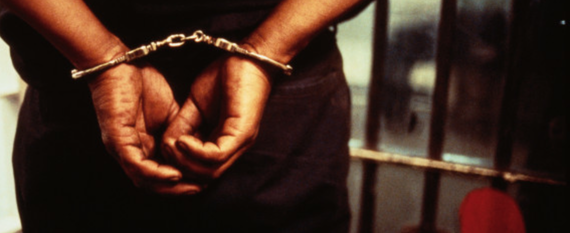Co-authored with Mae C. Quinn, Professor of Law
Washington University School of Law
St. Louis, Missouri
It's been several weeks since Michael Brown was shot by Officer Darren Wilson. The investigation and grand jury proceedings continue as community members in Ferguson, MO and supporters around the country call for justice in Michael Brown's name. But what exactly will justice and due process look like in the wake of his death?
It turns out that justice, like so much of what happens in America, has two faces. Michael Brown's shooting - and the image of his young black body left lying for hours in the summer sun - has become a symbol of the many forms of unfairness suffered by youth of color across America. Officer Wilson's treatment serves as a powerful counterpoint - the other face of justice.
If you had to choose between the protections afforded Ferguson Police Officer Darren Wilson and the treatment provided to most young black males in America, which would you demand for your child?
By all accounts, Officer Wilson is receiving exemplary due process before charges, if any, are filed against him. St. Louis County Prosecutor Robert McCulloch insisted upon a careful and thorough review, including a multi-week investigation and a grand jury process where "absolutely all" there is to know about this case will be laid bare for consideration. The grand jury will be provided with "every piece of evidence, every piece of paper, and every photo" relating to this killing, including any mitigating information that might be helpful to Officer Wilson. And in the event that he is charged and then arrested, we can reasonably assume Officer Wilson will have well-resourced and skilled legal representation.
The process afforded Wilson is readily contrasted to that received by most young men of color suspected of crimes in St. Louis County and across America, whether they face allegations in the same Circuit Court where Wilson's grand jury sits or in the juvenile justice system. For them, justice is rarely, if ever, so deliberative or fair.
Young men of color facing felony charges in St. Louis County Circuit Court are generally arrested first, taken to jail, and thereafter provided with a cursory preliminary hearing; most cases are bound over for further prosecution. Lawyers assigned to represent poor youth are part of one of the most under-resourced, overwhelmed public defender's offices in the country. Rarely will "every piece of evidence, every piece of paper, and every photo" be produced by the prosecution for purposes of probable cause determination.
St. Louis County's juvenile court, historically, holds no probable cause hearings for youth. This is true even for children who face certification to adult court. Under Missouri law, juvenile courts are actually precluded from considering the weight of the evidence against a child before sending them on to face prison time in the adult system. Year after year, data shows that these unfair practices overwhelmingly impact poor youth of color in St. Louis County and are mirrored elsewhere in the country.
Indeed, substantial national data confirm bias at arrest and pre-trial detention of juveniles - ever since the federal Office of Juvenile Justice and Delinquency Prevention (OJJDP) required states to examine racial and ethnic bias in the juvenile justice system over twenty years ago. We know, too, that disparate treatment doesn't end there. As a new OJJDP report reminds us,
"placement rates of black and Hispanic youth [across the country] far outpaced the placement rate of white youth. Black youths were more than 4.5 times as likely to be placed in juvenile detention facilities than white youth, and Hispanic youth were 1.8 times more likely."
Importantly, these placements are not due to higher rates of crime among black youth - this statistic compares the differences between the rates of placement for white youth versus youth of color for similar crimes.
Imagine if justice was suddenly colorblind - if the police and prosecution worked just as hard to provide due process for youth of color as they are for Officer Wilson. Imagine if they collected, sifted, and considered all of the possible evidence against everyone suspected of criminal or delinquent activity, before making an arrest.
Unfortunately, that is not the case. While Officer Wilson is enjoying the white side of justice, walking freely as he awaits the careful examination and piecing together of evidence for and against probable cause, young defendants of color continue to suffer the black side. Many black youth report that they are often arrested or picked up as "wanted for questioning" without any probable cause. No arrest warrant, no formal process.
But perhaps Prosecutor McCulloch's approach to Officer Wilson's case can serve as a new standard for all cases going forward in St. Louis County, and across the country. That new standard would ensure a slow, methodical investigation before someone is removed from the community, or before anyone else spends time face down on the sidewalk in handcuffs, in the back of a police car, or in a cold detention cell, thus "avoiding a rush to judgment."
So what should justice look like in the days ahead - for all persons suspected of crime in America?
It should look just like Office Darren Wilson's due process. We ask nothing more; yet demand nothing less.
* The Washington University Juvenile Law and Justice Clinic has represented countless kids across the St. Louis region - including Ferguson.

